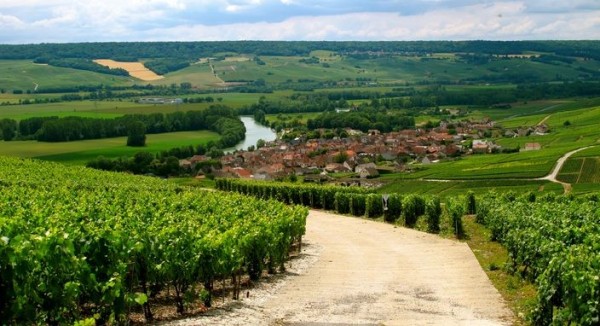What happens when someone graduates college, or gets that special promotion, or becomes bound in holy matrimony to their significant other? Why, there’s a loud POP!, and a cork goes flying somewhere as frothy sparkling foam gushes from the front of a finely-colored bottle. Quickly thereafter the champagne is poured in a variety of glasses and someone proposes a toast–that’s what happens at virtually any significant celebratory event in the world.

Image Courtesy of weknowyourdreams.com
But what is champagne? Is it within its own class of alcoholic beverage? Is it synthetic? Well, as it turns out, Champagne gets its name from the region in which the drink emanated. That region happens to be the Champagne region of a country well-known for its inebriation-inducing beverages, France. What defines champagne from wine primarily, beyond the bubbly nature of it, is a process called secondary fermentation. It is the secondary fermentation which creates the carbonation. Different vineyards have different practices, but for authentic champagne, at the very least grapes must be specifically sourced from Champagne, France. There are also regimes of pressing which are unique to that region. While there are those that have taken to use of the term “champagne” to describe any kind of wine with carbonation, most countries have made it an illegal practice to label a sparkling wine with this moniker unless it can be demonstrated to have emanated from Champagne, France.

Image Courtesy of www.gannett-cdn.com
A number of grapes are used in proper production of champagne. Primarily, Pinot noir grapes and Pinot Meunier grapes are used; however Chardonnay grapes also get used with regularity. According to appellation law, the only grapes which can be used for actual Champagne must be grown according to appellation rules. This means the grapes are grown in plots which have been directly designated for use of grapes to be made into Champagne. As far back as the sixteen hundreds, people began to drink Champagne in royal climes, and the trend has continued to the present day; the only substantial difference being that now such beverages are available even to individuals who aren’t conventionally “royal”.
Andre California Champagne and Sparkling Wine offers a number of Champagne options, including the ever popular “Brut” champagne. “Brut” is a mixture of white wine grapes resulting in a blend that’s medium to dry. The fruity flavor produced is somewhere between sweet lemons and green apples. Brut is regularly used as a mixer for a variety of cocktails. Meanwhile, Extra Dry Champagnes usually evince recollections of apple or pear aromas. Extra Dry, from Andre California Champagne, actually comes across in flavor as a semi-dry Champagne. Also, don’t be fooled by the inclusion of “California” in the name of Andre’s fine sparkling wines. The appellation process ensures the Champagnes produced are the legitimate article, and well-worthy of taste-testing and praise; only don’t have too much and drive! A hangover is bad enough, but a DUI is downright abominable. Drinks should be enjoyed responsibly whenever possible.
It’s difficult to dispel an air of fancy, regal grace when Champagne is brought to the table. It’s a delicious special-occasion wine which is renown the world over, and for good reason. It makes sense, also, to always have a bottle of premium champagne available at all times, just in case. Who knows when that next important moment will come? To be able to enhance that moment with drinks which that have been renown for their class for several hundred years is worthwhile. Whether dry or semi-dry, Moscato or Spumante, Champagne drinks define the moment, and will continue to define it for decades to come. Be sure to get yours from the best.
